Have Questions or Comments? Please ask your questions in the comments section below.
Listen via YouTube video if desired
Transcription
This is the Get Sellers Calling You marketing podcast for real estate agents and I’m Beatty Carmichael. For simple to do, proven marketing strategies focused exclusively on finding sellers and getting more listings, visit our website at GetSellersCallingYou.com. And now, let’s begin our next session of Get Sellers Calling You.
Caroline: Hi everything, this is Caroline Springer and welcome to the next session of Get Sellers Calling You with Beatty Carmichael. Beatty is the CEO of Master Grabber, the creator of Agent Dominator and one of the top marketing experts in the Real Estate field. Today we are going to be continuing on talking with our topic of how to make money with geographic farming. We are continuing on from last week. We spoke about postcard marketing that works and the two types of postcards that work. We are going to continue on in that conversation. Just a reminder for those of you who are on our live call. We will have our lines muted but will open up for questions and answers at the end of the call with Beatty. Welcome Beatty. I’m excited to continue on in our conversation.
Beatty: I am too. We are getting into the exciting stuff now.
Caroline: Lots of details. Lots of content. I felt like last week, there was just one topic but there was so much to dive into. I’m sure some of our listeners would not have even though to think about when it comes to selecting the type of postcards. I think they’ll find this call just as interesting as we continue in that conversation.
Beatty: Well hopefully so. There is so much you can do and as we said, a lot of times, most agents don’t get as much out of a farm as they can, simply because most agents don’t know how to do it. Hopefully with these calls we’ll pull back the curtain and you’ll start to see how to do it and say, “Wow, this really can happen. It can happen fast. We can make a lot of money and we can do it.” So that’s the goal.
Caroline: That’s why they have you. I’m sure many of them wish they had had you from the beginning so they could make some money.
Beatty: They can always hire me or they can learn everything that I’m able to teach and apply it themselves. We’ll do it either way.
Caroline: Either way sounds good. Did you want to do a quick review of last week or do we just want to jump in? I know we spoke about self-selection cards last week and the two types of postcards. This week we were going to continue on with inside reality. I didn’t know if we wanted to do a refresher since we talked about so much or just kind of jump in. Either way is great with me.
Beatty: Let’s do a quick refresher simply for those who haven’t listened to last week’s call or maybe it’s been a while since they have listened to it. And that way, everything gets brought up to date. So what we are talking about is geographic farming and the postcards that you start to send out. Last week we were talking about that most agents, when they send out postcards, are not even sending out what I find to be probably to be the two most effective styles of postcards. Last week we talked about one style. Some people call it direct response. We call it self-selection because self-selection is probably more accurately what the postcard is trying to do. It’s trying to get the homeowner who is thinking about selling to actually select themselves. So we discussed kind of in depth what that was.
The second type of postcard, which is on topic for today, is what we call inside reality and inside reality has a completely difference focus. Where you have a self-selection card whose entire job is to get a seller to respond so you can identify who they are, the purpose of an inside reality card is to win the seller’s mind to trust you over any other agent so that when they start to go on the market, they call you first. So the self-selection card is a proactive card. They respond. You proactively, then, engage with them in following up. The inside reality card is more of a reactive card, which means that you wait until they call you and then you pick up the listing. Does that make sense?
Caroline: Absolutely. Even some of that might be new to some of our realtors, but this is still an option and something they can send. I think that was a great explanation.
Beatty: Good. So that is our review as we get into these cards. Can I take the lead and just talk about inside reality cards?
Caroline: Absolutely.
Beatty: Okay. Let’s first talk about what is an inside reality card? Most people have never heard “inside reality” and I want to give a little background to what it is because it is a marketing term. The marketing term is essentially the concept of what we call outside perception verses inside reality. It governs basically everything that happens in a selling environment and especially with real estate agents. The way the outside perception verses inside reality concept runs is like this. You have you as an agent and you have the people in the farm as all the homeowners. The question is, how do you view yourself and how do they view you? If we were to ask that typical homeowner, “What do you think about real estate agents?” Here is what they would say: “All agents are the same. All they do is stick a sign in the yard, list the home in the MLS and wait for someone else to bring a buyer. And, as long as the homeowner generally believes that to be true, then you will never get a lion’s share of the listings because they have no reason to call you over anyone else. Because in their mind, “It doesn’t matter who I call. My home is going to be sold for about the same price in about the same amount of time because the agents all do about the same thing.” Are you following the process on that?
Caroline: Absolutely. I’m sure there are a lot of realtors listening who are thinking, “Wait, no, I’m different.”
Beatty: Yes. So I have to tell a story. I’m on the phone with a guy named Jason. He has the largest RE/MAX team in the world. At that time, they were doing like 1,120 transactions a year. Fast forward a few years now, they are now over 2000 transactions. He has a huge team. We organized a call. He said he wanted my help on improving what he’s doing in geographic farming. Here is kind of how the discussion went. He is targeting 2000 homes. He’s been targeting them for six months. He has been using the self-selection (direct response cards) approach only. He has gotten basically nothing out of it. The first thing we discussed is what is called a trusting relationship. Does the community trust you (that’s a topic for a whole entire different discussion)? I was explaining that trust is based on “branding.” I used the wrong word because most agents think of branding differently than what it really is. He says, “Oh no, Beatty, it can’t be branding because I am really well branded.” And I said, “Well, tell me what you mean Jason.” He said, “For the last two years, I’ve been spending $8,000 a month (that’s $100,000 a year) branding myself. I’m on the radio. I’m on the billboards. I’m at the athletics fields. I’m in the grocery stores. I’m on the park benches. I do a quarterly newsletter that is twelve pages long and I’m sending it out to all of these people four times a year. I’m really well branded.” I asked, “Is all of this is happening in this community of 2000 homes?” He said, “Yes.” I asked, “In the last six months, how many listings came on the market in that area? He said, “Oh, a couple of hundred.” I asked, “How many of those did you get?” He said, “A couple.” I said, “Jason, if you are so well-branded, then why did only a couple of people trust you enough to sell their home?” There was this pregnant pause. He said kind of sheepishly, “I don’t know.” I said, “Would you like to understand why?” He said, “Yes.”
Now on the phone also is his assistant, Cam, and she has been with him for about ten years. I said, “So what is going on is (and I’m explaining the outside perception versus inside reality) that all of these homeowners view you as just another agent. And he said, “Yes, you are right about that.” I told him, “It doesn’t matter that you have been on the radio and the park benches and all this stuff. They see you as doing the same thing as every other agent does. But imagine for a moment that all of those homeowners were Cam. They understood how hard you worked, all your education level, your expertise, your drive, all the little nuances you do in the entire process that gives your clients a competitive edge that drives a higher sales price, lower days on market, less hassle and they really understand how you personally operate. If all of those homeowners were Cam, how many of those listings do you think you would have gotten?” And Cam pipes up at that moment and says, “All of them.”
So here is what we have, Caroline. We have this disconnect between who Jason is and who the market thinks he is. Until the market believes in Jason at that same level that Jason believes in himself and that Cam believes in him, then there will always be lots of people who choose another agent besides him. Are you following me on this understanding of outside perception versus inside reality?
Caroline: Absolutely. That makes a lot of sense. I’m sure a lot of realtors listening are thinking, “How? How do I show them how hard I work and get everyone to be a Cam where they will definitely choose me?”
Beatty: Therein lies the problem and that is why what we call the inside reality card is really probably the most important thing you can do. It’s not just the postcard; it’s the content. You can deliver the content on a hand-delivered packet of information. You can deliver the content through digital means. We happen to deliver it, and think that it is most effective delivered, through postcards for a lot of reasons. Maybe we’ll talk about those as we go.
Let’s move back into the inside reality cards. That’s what it is. It’s all about how do you transfer the reality of who you are and make it their perception of you. The more they perceive you as you really are, assuming you are good, then the more they are going to choose you. And, let’s also add back in the self-selection cards, our experience. The more they perceive you as you really are, the more likely they are also going to respond to the self-selection cards. So it’s a multiplier. The more you do it right, the more everything goes well. It’s sort of like what Reagan said many years back, “A rising tide raises all boats.” As their perception about you increases, everything about you that you do increases about you as well. It’s really a critical concept in understanding.
Then we have to look and ask what type of content really works? Would you like to take a guess at what to do now, now that we have the understanding? Would you like to take a guess on how you start to implement it?
Caroline: I know for myself that I have received some postcards before in the mail from realtors and other industries as well. I know for me that I’m kind of a numbers person so seeing some kind of proof of how good they are helps me. A neighbor of mine, about four houses down, sold their home. The realtor sent out a card and it said, “We sold the home before it went on the market for above asking.” I think it even mentioned multiple offers, but I remembered that versus we get all kinds of stuff in the mail all the time. So for me, some kind of proof of a sale is going to win my attention. That would be my first guess.
Beatty: Yes. So, survey says, you are dead on. Here is what is interesting. The easiest way to shift outside perception to your inside reality, not a complete shift but start to move the needle, is a Just Sold postcard. It’s actually the easiest thing you can do. In fact, and I think we mentioned this on our call last week, years back, in talking to different agents and bringing them on our services, I would always ask them, “Have you ever done geographic farming.” Some said, “Yes.” Those who said, “Yes,” I would always ask, “Were you successful?” The only ones who said “yes,” when I asked them what they did, 100% of the time they said they sent out Just Sold postcards all of the time. All the time means at least once a month, if not every three weeks or 18 times a year. So the first step is they have to see that you are constantly selling. This is one of the things that in testing and analyzing what is going on we found a formula, Caroline, that when you apply this formula, you consistently get great results over time, in driving sales into you.
That formula is what we call the Three S’s. The first one is to show off your sales or your successes. Let them know that you are actively selling and let them know that not only are you actively selling but you are selling really well, getting above list price, getting short days on market, doing all kinds of things that they just don’t see the other agents doing. Because, what we believe to be true in our mind becomes our reality in a very broad sense. As you can show them your successes on an ongoing basis, then they believe that to be true. The opposite is also true. They don’t see that with all of these other agents. So when you put it on a scale, your side of the scale has a lot more weight to it, so it tilts in your direction. That’s the first thing.
Now let’s take that Just Sold postcard and say, how do we do better? Here is something that we found that is pretty interesting. The postcard you are talking about, Caroline, probably said, “Just Sold for X number of dollars over list price” or something along those lines, right?
Caroline: Right, with a picture of the front of the house.
Beatty: Okay. Now, if it said, “Sold” instead of “Just Sold,” would it have made the same impact to you?
Caroline: Maybe. I think so. I don’t know that I would have thought too much into it.
Beatty: Bingo. You wouldn’t have thought too much into it. “SOLD! $5,000 over Asking Price.” or “Just Sold! $5,000 over Asking Price.” When we see the word “Sold,” we think, “Good job!” When we see, “Just Sold,” we think, “Good job!” I don’t think there is much difference between the two. The reason I hone in on this is because now you can stack the deck in your favor. Let’s say that you don’t sell that many homes all of the time. Maybe you are a lower volume agent and you are doing only 8 sales a year and some of them are not all that great. It doesn’t matter. Here is what you do. You simply go back into your previous sales, the last year or two, and you find that ones that are good. Then you highlight those in a postcard. “SOLD!” You just don’t give the date. If you don’t give the date, you leave it up to people to go, “Wow, you did it again.” It doesn’t matter that that home was sold three months ago or even thirteen months ago. All that matters is that you are honest with what went on and that you are showing off something that excites them so they start to believe that you are an excellent agent. Okay? Make sense?
Caroline: Absolutely.
Beatty: All right. Let’s take it a step further. All of this starts to go into, “How do you shift perception?” You show off your sales all the time. That is starting to shift perception. You don’t have enough sales? You go back and you pick out the best sales you have over time, or good ones, and you start sending those out. Now you are increasing perception because more of your sales are what we call, a Wow Sold—“Wow! You did an amazing job.”
Let’s now take it a third step further and that goes into the second part of the three S’s that we’ve found. That is to explain the secrets behind your successes. It’s not just showing off a home that you sold. It’s not just showing off that you sold it in the fastest time with a high price amount or anything like that. All of that is important, but then we want to take that and explain why. For example, why did that home sell so fast? Maybe the seller said, “I’ve got to move! Do whatever you can.” Maybe your normal process is that you take beautiful photographs—professional photography—so that they show up best online. Maybe you do something special with your photograph. One guy here in town sells in a luxury area and all of his photographs have a gorgeous hero shot—the front of the house. It’s always taken at dusk so that the lights are nice and warm and shining on the inside. When you look at the house, it just looks gorgeous. Okay? When you look at all the photos he has for his homes, they are all absolutely gorgeous. They are things that drive more eyeballs online.
Whatever it is that you do, you start to explain some of the secrets—whether you work harder; whether you do more advertising; whether you network it more; whether you use professional photography; whether you use drone photography; whether you prepare it better; whether you stage it better; whether you do any of these things or all of these things. Each of these becomes things that you educate the homeowner on as part of the reason that you succeeded. For example, one of our clients, when he is marketing to his farm and gets a new listing, will do something like a Coming Soon. You may say, “What does that have to do with a Just Sold?” It plays into it. “I just got another listing,” which is a social proof. But then he explains, “Before we put it on the market, here is what we are doing.” He will give three or four bullet points of how he is getting the home prepared: We are making repairs. We are painting it. We are decluttering, getting all of the clutter out of it. We are doing these things so that when it goes on the market, it will show its best and it sells fastest. He is educating the homeowners what he is doing and as they are seeing that this home in their neighborhood is going on the market and what this guy is doing, what do you think is going on in their mind about their perception of that agent?
Caroline: I would think that they are impressed. They are thinking about things that maybe they haven’t thought about what agents do. Now they are thinking about what sets that agent apart from other agents. I think a lot a lot of people too don’t even know what agents do, so even if it is something that seems simple to an agent, it could be good to say: Professional photography. Most agents may say, “Well, that’s a no-brainer.” But maybe to a lot of homeowners, it’s not. So just listing something like that is going to start to set them apart. “Wow, this agent does things differently. They do more than maybe the average agent.” This starts to individualize them a little bit.
Beatty: That’s right. It starts to differentiate them. Here is the key: It differentiates them, not necessarily because the agent is different from other agents in his class. If you are a top 10% agent, probably you do very similar activities that other top 10 agents do. But the homeowner doesn’t know what the other top 10 agents do. So when you explain it, then it differentiates you in their mind because no one else is explaining it. Now, if we put this on a scale, your side of the scale gets heavier and heavier, leaning them toward you. This is what we are talking about. Share the secrets behind what you do.
If we go back to my client, he does a Coming Soon, then he does a Just Listed: “Hey, we just got this on the market. I created a custom website. You can actually go there. It’s the first page on Google right off the bat. I do it that way so we get more people looking at it. That’s how my homes sell more.” He is educating them on what he does. Then, when that home goes under contract, he might send out an Under Contract: “We got this under contract in only 7 days and we received three offers because of diligent preparation and amazing, strategic marketing.” He is constantly explaining the secrets. Then when the home is sold: “SOLD for 101% of Asking Price!” or “SOLD for $1,000 over List Price.” Then he explains a little bit more. What he is doing is, each something goes out, he is explaining what he did to make that home sell. Then, go back to the perception, every time the homeowner gets those cards, that homeowner is getting persuaded.
Now, what do you think my client does if that home is in a different area of town than his geographic farm? Where do you think he sends those same postcards? Those Coming Soon, Just Listed, Under Contract and Just Sold? Any idea? Does he send them to a farm that they are not listed in?
Caroline: I wouldn’t think so, but I could be wrong. I wouldn’t think it would make as much sense to do that.
Beatty: Let me ask you a question. If you see a home that looks similar to yours, but you do not know that it is across town, but I mail you that postcard anyway, does that start to impress you about me selling homes like yours?
Caroline: It does. I’m sorry; I misunderstood. I thought that they would know that it was in a different area.
Beatty: You bring up a perfect point. This is where agents get a little myopic. Most people think that when you send out a Just Sold or all that stuff, you have to put the address on the card. Just leave the address off and now they can’t tell if it’s their neighborhood or not. Because of doing that, now you can continually send out new sales, new listings, new contracts, everything that is going on and still hit the same list over and over again. What we are trying to do, most people, when they get a new listing, they only mail around that listing. “Hey, I just listed a new home in your neighborhood.” But which do you think is going to be more effective, Caroline? Someone gets a listing in your neighborhood so they mail you a postcard or two about that and then you never hear from them again because they are now selling some other home in some other neighborhood or, you get a postcard all the time from the same agent because of all of the sales he has going on all over town. Which of those two instances do you think you are going to become more favorable toward that agent and trust that agent more?
Caroline: Definitely the second option where you are hearing from them more and again, like you said, just leaving the address off and showing a photo especially, they don’t know where it is. It could be a few streets over of a home they didn’t know. Hearing from them more about homes that are, not just nearby, but around in general, is good. The more you are in front of them, the more favorable they will think toward you, especially if they are seeing you sell, you listed a home, you are under contract and things like that. Definitely the more the better.
Beatty: Here is a simple conclusion to all of this. Stop doing geographic farming the way that most people think you have to. Most people say, “Well, you only send out Just Listed or Just Sold to the same area that you did that.” No, the most important thing is to send out Just Listed and Just Sold to the same addresses over and over and over and over again so they start to trust you and they start to choose you. That is what geographic farming is all about. You constantly target that same farm regardless.
Here is a little secret that we use. Maybe the home looks different on the outside. The external design of the home is a different design style than the neighborhood that you are targeting. In those case, all we do, and I suggest that you guys do, is use an inside photo instead of an outside photo. Just think outside of the box. Show a photo of the den or the kitchen or the master bath or anything like that because once you get outside of the exterior of the home, then the interior of the home is going to be pretty much all alike. Now, you can leverage a home for any sale.
I know we are getting close to running out of time, but I want to cover a couple other things real fast.
Content that works: Show off your secrets. You need a little help? Go to your listing presentation and pull stuff out of your listing presentation to talk about: your integrity, your discipline, your expertise, your education, how you do promoting, whatever your listing presentation is will give you at least topical content that you can think about to put this stuff together.
I know that we are getting close to time. Do you have any questions?
Caroline: I did think, in us talking about postcards, a few things that could be good. I have heard a lot of people ask about the difference between, does it matter if you do a jumbo size or a regular-sized postcard? I thought that could be something good for me to ask you. I believe myself and our listeners could learn what you feel the difference is in that.
Beatty: Would you believe that I tested that?
Caroline: I am not surprised. You’ve tested almost anything that I could probably think of, so I’m not surprised.
Beatty: I’m one of these guys that is very critical. I don’t believe anything anyone says until I can go prove it myself. I used to hear all the time, “Jumbo outperforms regular-sized postcards.” You go look up on websites and stuff and see that jumbo outperforms. We tested it between four and five times. Thousands and thousands of split A/B mailings. Here is our conclusion and it is pretty accurate. It’s real accurate actually. If I am doing a self-selection card, jumbo or regular-sized gives me essentially the identical results. It makes no difference. There are some reasons behind that but I won’t get into it because we are running short on time. If I am going to do an inside reality card where I am going to explain the secrets, then jumbo works better than regular simply because I have a larger size to give more content. That’s actually the solution between jumbo and regular. If you are trying to educate, jumbo is better. If you are doing direct response, either one will give you basically the same results. Pretty cool, isn’t it?
Caroline: It is. That was good, even just to hear what you said originally. It depends on what type of card. Sometimes regular will work the same. It just depends on what you send. I know probably all over the internet, like you said, it recommends the jumbo, so that’s good to know that it depends.
Another thing I was thinking too that could be a good question for us to hit on, is if there was just one thing that was maybe the most important thing that you would do or say on a postcard? What is the single, most important thing to focus your energy on and time on?
Beatty: That’s a great question and that’s very insightful. Most people would never ask that question. By the way, the questions you ask determine how successful you will be because that is the only way you are going to get the right answers. The most important part of all of these, believe it or not, is going to be your headline. The headline on the postcard, those first few big words at the top of the postcard, will determine whether someone even engages on the postcard or throws it away. Studies have shown (and there is no specific number) that somewhere between 75% and 85% of the success of your marketing is the headline. In some circles, the headline is called the interrupter, meaning that you have to interrupt that prospect and grab their attention so they will actually engage in their marketing piece, in this case engage in your postcard, or you don’t get their attention at all. If you are going to spend time anywhere, spend it on the headline. The way that you do it (and we do this with even our clients. We’ll write 20 or 30 headlines at times for one, simple postcard). We are saying the same thing in different ways, trying to figure out the best way to say it that is the most powerful. It is amazing when you just focus on it, you will find headlines that are a lot more powerful than the previous ones and that is going to drive your results. The single most important thing is going to be the headline.
Caroline: Well good. I think that was insightful for some of our realtors too. I’m sure, maybe a lot of them like you said earlier, maybe just write “Just Sold” or something like that. So that was probably a good little tip for them to spend their energy and time to make sure that the headline is perfected to get the person to continue reading.
Beatty: Let me give you a quick example since you are talking about a Just Sold. I’m going to do a Just Sold and I’m going to give some insight into what I did with that home. You get a postcard that says, “Just Sold – $235,000.” It shows a picture and then there is content. The next postcard is going to say: “Just Sold for $235,000. Read the amazing story of what actually happened…” Which of those two postcards are you more likely to actually start to read?
Caroline: Probably the one with the dot dot dot at the end because that is continuing. It feels like I want to finish the sentence. I want to know where it’s going.
Beatty: There are several things involved with that headline. “Just Sold for $235,000. Read the amazing story of what actually happened.” That creates curiosity. What’s the story behind this one? Why is it so amazing? The dot dot dot is a continuation. It’s not a hard stop. It’s basically that mental queue that says “continued.” So what that headline does is it creates curiosity and creates a desire to then continue. The other one, “Just Sold – $235,000” does not lead you anywhere; it’s a dead end. So that is the power of a headline. It can cause a person to stop, get curious and to read more and that is when your card takes shape.
Caroline: That makes a lot of sense too. I love all of your explanations on these because really, you are a marketing expert and a lot of realtors obviously aren’t. There are things that you’ve seen and tested and know. That is a lot of marketing language. How to creatively word a headline is probably not something that a lot of realtors are trained in. That was informative and good for them to hear.
The last thing I was thinking too was, I know we talked a lot about being consistent with how often they send postcards and all that. Is there a major equation for how consistent they should be? How often they should send? Anything in that kind of line that could be a good take away for some of our realtors in how often to send cards?
Beatty: The most important thing is that you have to be consistent. Don’t start and then stop because what happens mentally in that homeowners mind, “Oh, you are inconsistent.” One of the greatest things is to always be there. So once you pass the, “Oh, I’m going to always be there” then the question is, “How frequently are you there?” The things we’ve seen and kind of accessed ourselves, but more than anything else is we’ve seen studies or comments from agents who all they do is geographic farming. The range is on the very low side, 12 times a year. On the very high side, mail 24 times a year. Most of them seem to think that 18 times a year is probably the ideal. I would say, if you want to pick a number, mail 18 times a year. That is going to be every three weeks. If you do that consistently, then you are pretty much there.
Caroline: That was all the questions that I had of ideas to throw out there. I do think we are about out of time. If it’s okay with you, we can kind of start our wrap up.
Beatty: Okay.
Caroline: Beatty, thank you so much for your time and expertise. This really was a great call and a great continuation and further going in depth about what postcards to send. Thank you for your time and sharing. Is there anything else that you would like to share before we officially close?
Beatty: I always like to put a plug in for what we do. There is a lot that goes on in geographic farming and everything else. If this is overwhelming and you want to see what we can do to help you, just go to agentdominator.net. AgentDominator.net. This is the service we offer. Fill out the form. One of our team members will get back with you and we will walk you through a demo of what it is that we do, how we can help you and, by the way, we also guarantee your sales at a minimum level so that you cannot lose money. If we miss this guarantee, you get your money back. We stand behind it. That way you can outsource everything. You stay focused on selling homes and leave the marketing to the experts who understand it.
Caroline: That sounds like a good plan so they can make more money. What we are going to do is we are going to wrap up the call. For those of you who are on the call live with us, if you have any questions you would like to ask Beatty, just hold on and we will go into a short question and answer time. Thanks for joining us today.
Beatty: Thank you, Caroline. Have a great day.
P030

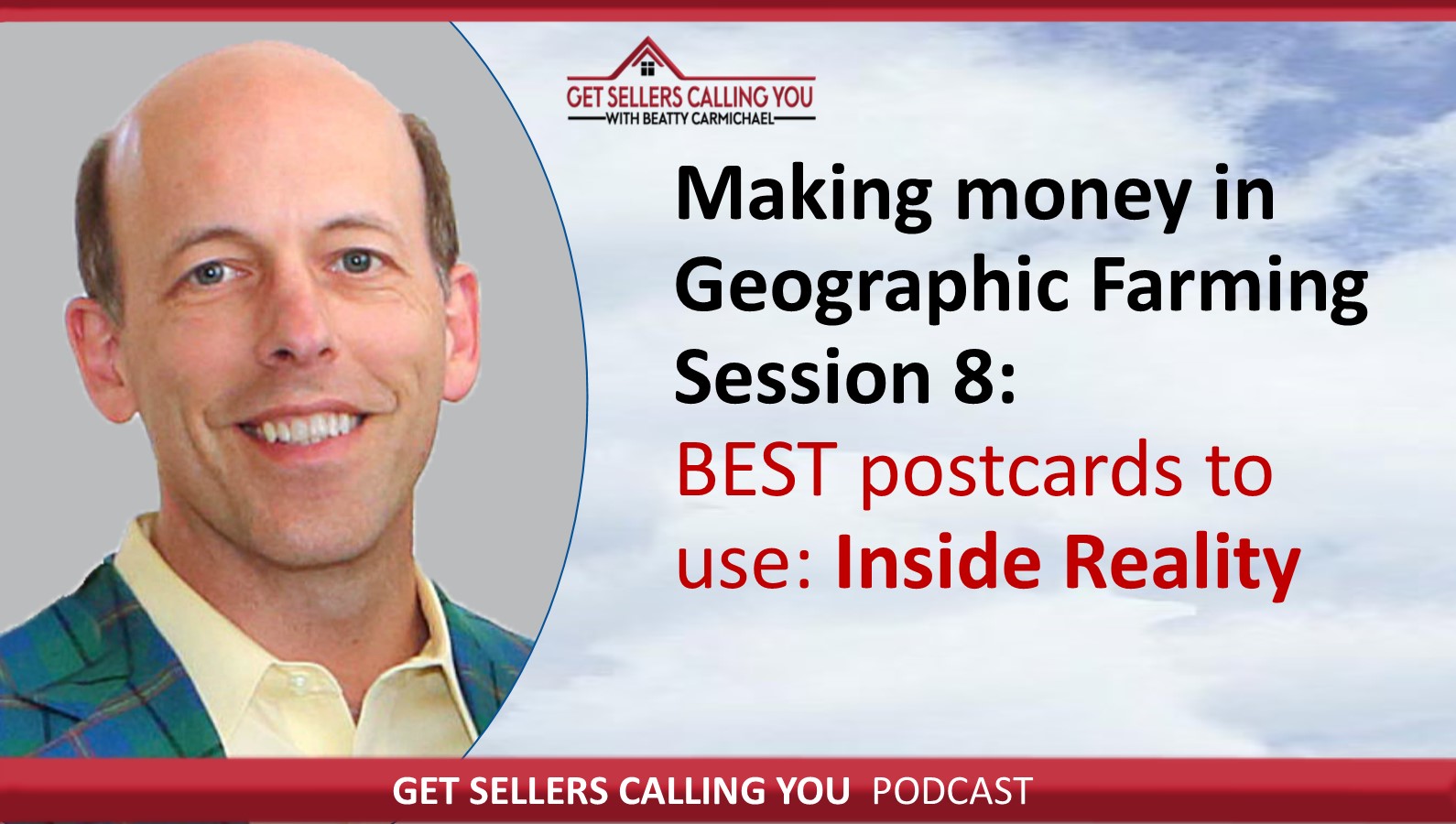
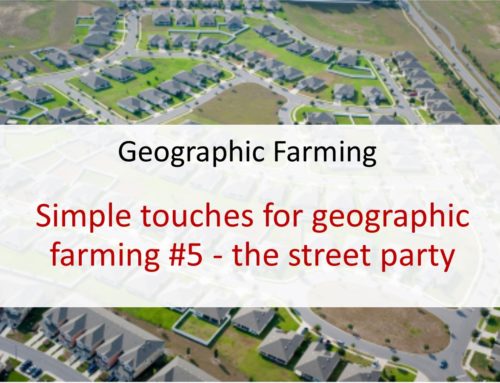
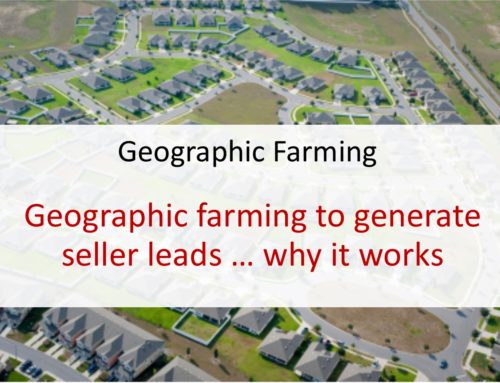

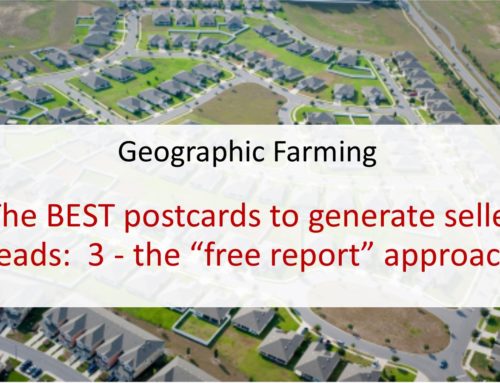
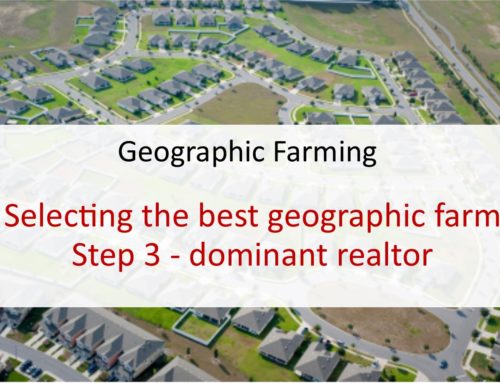

Leave A Comment